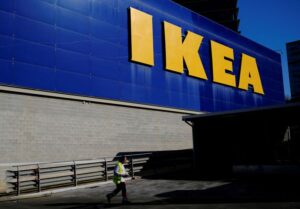IKEA’s Price Strategy: A Deep Dive into Ingka Group’s Financial Report
In a move that has sent ripples through the retail sector, Ingka Group—the largest franchisee of IKEA—recently disclosed a significant decline in annual net profits, reporting earnings of 800 million euros ($841.28 million) for the fiscal year ending August 31. This decline from 1.5 billion euros last year marks a pivotal moment for the brand, as it grapples with changing consumer behaviors and economic pressures.
Navigating a Price-Centric Strategy
In an environment where cost-conscious shoppers are becoming the norm, Ingka Group has prioritized affordability over profit margins. With the retail landscape increasingly dominated by inflation and shifting consumer priorities, the company invested an impressive 2.1 billion euros to lower prices on a range of products, from bookshelves to bedding. The strategy is not solely about cutting prices; it reflects an understanding of consumer psychology and market dynamics, focusing on driving foot traffic and increasing sales volume.
While revenues fell 5.5% to 41.8 billion euros—comprised mainly of 39.6 billion euros from IKEA retail sales—the company noted that its lower pricing strategy led to a 3.3% increase in store visits and a remarkable 28% surge in website traffic. Juvencio Maeztu, deputy CEO and CFO of Ingka Group, emphasized the importance of this approach, stating, “Even if we sell at a lower price average, we sell more quantities and we get access to many more people.”
Shifting Sales Tactics: The Impact of Price Reductions
Products like the $229 mattresses and $149.99 wardrobes saw a spike in sales due to aggressive price reductions that reversed the negative trend caused by previous price hikes. This tactic serves as a compelling case study in how strategic pricing can impact customer purchasing behavior. Maeztu confirmed that the company plans to maintain its new price points to sustain the momentum of this growth.
Market Insights and Regional Performance
Germany remains IKEA’s leading market, accounting for 15.5% of sales, followed by the United States, France, the UK, and Italy. Understanding regional trends and consumer preferences is crucial for brands seeking to optimize their performance. For instance, the U.S. market, with its diverse customer base and varying income levels, presents unique opportunities for targeted marketing strategies that can further drive sales.
The Bigger Picture: Long-term Investments
Interestingly, while Ingka Group faced declines in quarterly profits, Inter IKEA, the overarching brand owner, reported higher profits this year—a testament to its efficient cost management, particularly through reduced interest payments. This illustrates a complex but cohesive strategy within the IKEA ecosystem, where both entities operate to maximize profitability while navigating external economic challenges.
Ingka Group also emphasizes its commitment to long-term growth, funneling 85% of its profits back into the business as opposed to simply maximizing short-term gains. This financial independence affords the company the ability to weather economic storms while laying the groundwork for sustainable growth.
Concluding Thoughts
The current challenges faced by Ingka Group serve as a significant lesson in retail dynamics. By choosing to invest in price reductions, the company has embraced a strategy that not only enhances customer satisfaction but also fosters long-term loyalty. As retailers worldwide observe IKEA’s strategy, it may inspire a broader shift towards prioritizing consumer needs over immediate profit margins.
For investors and retail enthusiasts, keeping a close eye on how Ingka Group navigates this landscape will be essential. They not only lead in IKEA’s retail space but could redefine successful consumer engagement strategies for the retail industry as a whole.

